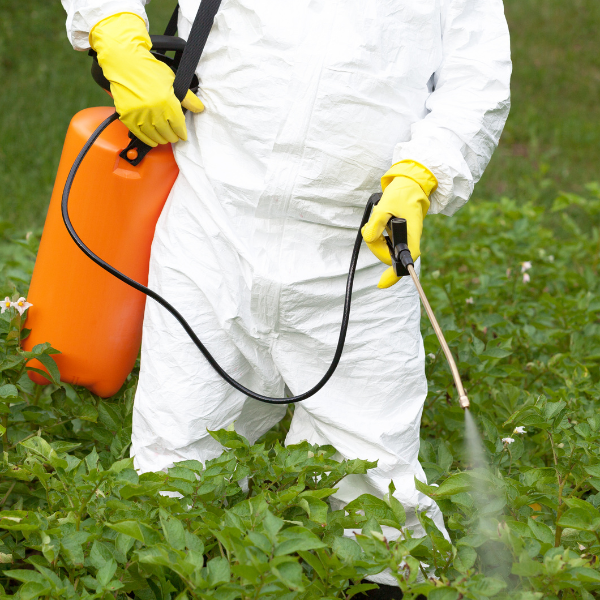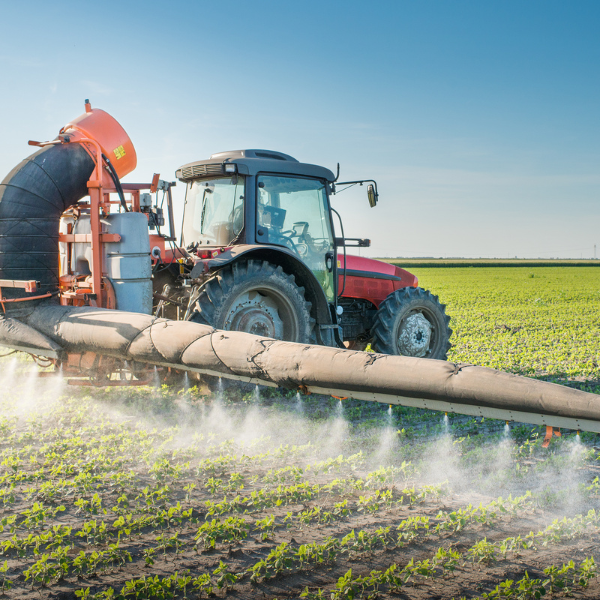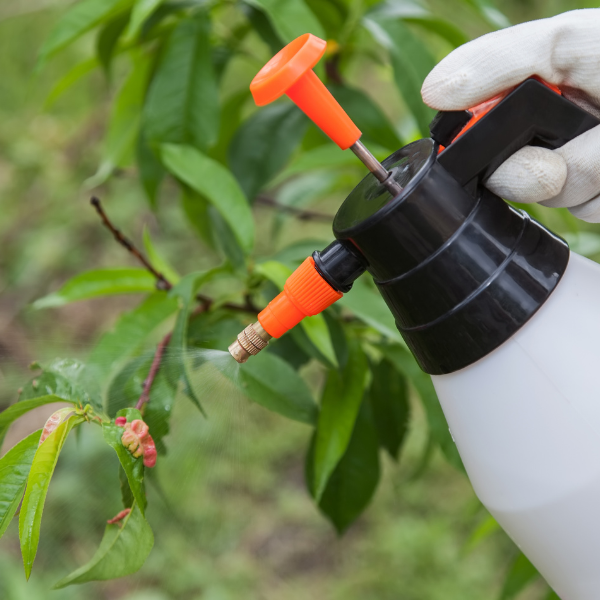Dairy Operations

Organic Inputs
Transitioning dairy operations to USDA Certified Organic practices involves addressing soil health, pasture management, and animal health while adhering to USDA National Organic Program (NOP) regulations. Organic inputs for dairy farms focus on maintaining productive pastures, managing pests and weeds, and supporting livestock health without synthetic chemicals. Below is a recommended list of USDA Certified Organic inputs for herbicides, pesticides, and fungicides tailored to dairy operations, with an emphasis on pasture remediation and ongoing management. Always verify products with the Organic Materials Review Institute (OMRI) or your certifying agent, as formulations vary.
USDA Certified Organic Inputs

Herbicides

Pesticides

Fungicides
Herbicides
Organic weed management in dairy pastures prioritizes prevention through rotational grazing, cover cropping, and mowing. Approved herbicides are non-selective, contact-based, and degrade quickly to minimize soil and forage impact, ensuring safe grazing for livestock.
Acetic Acid (Vinegar-Based Herbicides)
- Use: High-strength vinegar (10-20% acetic acid) burns weed foliage on contact. Effective for annual weeds in pastures or fence lines.
- Remediation Role: Controls weeds during pasture renovation or cover crop establishment, allowing forage species to dominate without synthetic herbicide residues.
- Considerations: Non-selective; avoid contact with desirable forage. Repeated use may lower oil pH, so monitor with soil tests.
- Example Products: OMRI-listed vinegar herbicides (e.g., Weed Pharm).
- Use: Burns weed tissue, often combined with essential oils (e.g., clove oil). Targets broadleaf weeds and grasses in pastures.
- Remediation Role: Clears weed pressure during pasture reseeding, supporting soil recovery without persistent chemicals.
- Considerations: Non-selective; best for spot treatments. Costly for large pastures.
- Example Products: OMRI-listed formulations (e.g., Finalsan)
Clove Oil or Eugenol-Based Herbicides
- Use: Contact herbicide for annual weeds, disrupts plant cell membranes.
- Remediation Role: Manages weeds during pasture transitions, breaking down quickly to support soil microbes and forage growth.
- Considerations: Non-selective; avoid forage crops. Expensive for broad application.
- Example Products: BurnOut Weed & Grass Killer.
Corn Gluten Meal
- Use: Pre-emergent herbicide, inhibits weed seed germination (e.g., crabgrass, dandelions) in pastures.
- Remediation Role: Adds nitrogen to soil while suppressing weeds, aiding pasture fertility during transition. Safe for established forage.
- Considerations: Timing-critical; ineffective on established weeds. High application rates needed.
- Example Products: OMRI-listed corn gluten products (e.g., Concern Weed Prevention Plus).
- Remediation Note: Herbicides are secondary in organic pasture management. Focus on rotational grazing to reduce weed pressure, overseeding with clover or ryegrass to outcompete weeds, and mowing to prevent seed set. Test soils for synthetic herbicide residues (e.g., glyphosate) via bioassays or lab analysis, as residues may persist for months and affect certification.
Pesticides (Insecticides)
Organic insecticides for dairy operations target pasture pests while preserving beneficial insects (e.g., pollinators) critical for forage production. They are used sparingly to protect recovering soil ecosystems and ensure safe milk production.
Neem Oil
- Use: Repels and disrupts insect feeding/breeding (e.g., flies, grasshoppers) in pastures.
- Remediation Role: Low soil impact; supports beneficial insect populations during pasture recovery. Encourages biodiversity as soil microbes recover.
- Considerations: Broad-spectrum; use selectively to avoid harming non-target insects. Apply in evening to protect pollinators.
- Example Products: OMRI-listed neem oils (e.g., Garden Safe Neem Oil Extract).
Pyrethrins
- Use: Natural compounds from chrysanthemum flowers, knock down pasture pests (e.g., leafhoppers, flies).
- Remediation Role: Rapid breakdown (hours to days) minimizes soil disruption. Useful for pest flares during pasture establishment.
- Considerations: Broad-spectrum; toxic to beneficials like bees if misapplied. Use as a last resort.
- Example Products: OMRI-listed pyrethrin sprays (e.g., PyGanic).
Spinosad
- Use: Derived from soil bacteria, controls chewing insects (e.g., armyworms, cutworms) in pastures.
- Remediation Role: Low soil persistence; safe for recovering microbial communities. Targets pests during forage growth.
- Considerations: Toxic to bees when wet; apply at dusk. Overuse may lead to resistance.
- Example Products: OMRI-listed Spinosad (e.g., Monterey Garden Insect Spray)
Diatomaceous Earth
- Use: Abrasive powder kills soft-bodied insects (e.g., mites, flies) by desiccation.
- Remediation Role: Safe for soil; can be applied around barns or pastures to control external livestock pests without chemical residues.
- Considerations: Non-selective; avoid inhalation by livestock or applicators. Less effective in wet conditions.
- Example Products: OMRI-listed diatomaceous earth (e.g., Harris Diatomaceous Earth).
- Remediation Note: Synthetic pesticides can suppress soil microbes critical for pasture health. Use compost teas or microbial inoculants (e.g., mycorrhizal fungi) to restore soil biology. Encourage beneficial insects with wildflower strips or hedgerows to reduce pesticide reliance. For livestock pests (e.g., flies), consider organic-approved barn treatments like sticky traps or essential oil-based repellents.
Fungicides
Organic fungicides manage pasture diseases and soil-borne pathogens, critical for maintaining forage quality and preventing livestock health issues from contaminated feed.
- Use: Controls fungal and bacterial diseases (e.g., leaf spot, anthracnose) on pasture grasses.
- Remediation Role: Effective for foliar diseases during pasture transition, but use sparingly to avoid copper buildup, which can harm soil microbes.
- Considerations: NOP restricts application to prevent soil accumulation; monitor via soil tests. Not for routine use.
- Example Products: OMRI-listed copper fungicides (e.g., Bonide Copper Fungicide).
- Use: Manages powdery mildew and rust on forage crops.
- Remediation Role: Low soil persistence; safe for recovering ecosystems if used judiciously. Protects pasture grasses during establishment.
- Considerations: Can harm beneficial insects or alter soil pH if overapplied. Avoid during high temperatures.
- Example Products: OMRI-listed sulfur dusts (e.g., Safer Brand Garden Fungicide)
- Use: Alters pH to control fungal growth (e.g., powdery mildew) on pasture plants.
- Remediation Role: Minimal soil impact, supports healthy forage growth without disrupting microbial recovery.
- Considerations: Foliar use only; safe for most grasses. May require frequent applications.
- Example Products: OMRI-listed potassium bicarbonate (e.g., Milstop)
- Use: Beneficial bacterium suppresses soil and foliar pathogens (e.g., Fusarium, Rhizoctonia) in pastures.
- Remediation Role: Enhances soil microbial diversity, directly aiding remediation. Outcompetes harmful fungi in recovering soils.
- Considerations: Apply as soil drench or foliar spray. Works best preventatively.
- Example Products: OMRI-listed B, subtilis products (e.g., Serenade Garden).

Additional Remediation Strategies
Organic dairy farm remediation focuses on pasture health, animal welfare, and milk safety. Key practices include:
- Compost and Manure: Apply well-aged, organic-certified compost or manure (5-10 tons/acre, based on soil tests) to boost soil organic matter and microbial activity. Ensure manure complies with NOP 90/120-day rules for raw manure application before grazing.
- Pasture Management: Overseed pastures with diverse forage mixes (e.g., clover, ryegrass, chicory) to improve soil structure, fix nitrogen, and outcompete weeds. Rotational grazing enhances soil health and reduces pest pressure.
- Biochar: Incorporate 1-5 tons/acre to bind residual chemicals and improve soil water retention, benefiting pasture resilience.
- Livestock Health: Use organic-approved supplements (e.g., kelp, diatomaceous earth) to support animal health during transition. Avoid synthetic antibiotics or hormones, per NOP rules.
- Water Quality: Ensure clean water sources for livestock, as synthetic residues may leach into water systems. Test water for contaminants if prior chemical use was heavy.
Practical Considerations
- Soil Testing: Test pastures for pH, nutrients (N-P-K), organic matter, and residual pesticides (e.g., atrazine, 2,4-D). Labs like Cornell or A&L Labs offer comprehensive panels. Residuals may delay NOP certification, which requires a 3-year transition period post-synthetic use.
- Input Approval: Verify all inputs against the OMRI Products List or with your certifier. Some “natural” products may not be NOP-compliant.
- Integrated Pest Management (IPM): Use grazing management, trap crops, or physical barriers (e.g., row covers for temporary forage protection) to minimize input use.
- Monitoring: Scout pastures for weeds, pests, and diseases to time inputs precisely. Monitor livestock health to ensure forage quality meets organic milk standards.
- Grazing Records: Document grazing schedules and input applications for NOP certification audits.
Starting Point for Planning for a Dairy Farm Transitioning from Heavy Synthetic Chemical Use:
- Soil Test: Identify chemical residues, nutrient deficiencies, and pH levels.
- Pasture Renovation: Overseed with clover and ryegrass to smother weeds and build soil.
- Compost Application: Apply organic compost to enhance microbial activity.
- Spot Treatments: Use acetic acid for weed patches, neem oil for pest flares, and B. subtilis for soil pathogens.
- Monitor and Adjust: Re-test soil after 6-12 months and adjust grazing practices to track remediation progress.
The inputs listed—acetic acid, neem oil, B. subtilis, etc.—are starting points to manage weeds, pests, and diseases while supporting pasture recovery. However, organic dairy success relies on rebuilding soil health through rotational grazing, diverse forage, and compost, alongside careful livestock management. Synthetic chemical residues may take 1-3 years to degrade, depending on soil and climate. Work with a local organic consultant or extension service to tailor inputs post-soil testing, and maintain detailed records for USDA certification.
